Flute & Piano (A-B)
-
Abdel-Rahim, G :: Bohayrat Al-Lotus [The Lotus Pond]
Bohayrat Al-Lotus [The Lotus Pond]
Abdel-Rahim, G
-
Abel, C :: 6 Flotensonaten op. 6 Vol. I [6 Flute Sonatas op. 6 Vol. I]
6 Flotensonaten op. 6 Vol. I [6 Flute Sonatas op. 6 Vol. I]
Abel, C
Contains three sonatas for flute and basso continuo, with an optional part for cello or other basso instrument.
-
Abel, C :: Abel, C :: Concerto in D major
Concerto in D major
Abel, C
Originally scored for flute, strings and basso continuo.
-
-
-
Abreu, Z :: Tico-Tico
Tico-Tico
Abreu, Z
Arranged by Joe Bellini, Zequinha Abreu’s ‘Tico-Tico’ for flute and piano is a fantastic piece that balances both lyrical and technical passages. In two sections, Lento an Vivo, Abreu introduces extreme dynamic contrast, as well as impressive technique from the top of the piece. Upon the Vivo, the flute is in an almost non-stop virtuosic flurry to the end of the piece. Intermediate in level, this ‘Tico-Tico’ offers plenty to keep both the performer and audience engaged through the entire work. Abreu was a prolific 20th century Brazilian composer.
-
Absil, J :: Silhouettes
Silhouettes
Absil, JEditions Henry Lemoine presents Jean Absil's 'Silhouettes' for flute and piano, including the movements Sereine, Mutine, Dolente, and Capricieuse.
'Born in Hainaut in 1896, Belgium composer Jean Absil studied organ and harmony at Brussels Conservatoire where he won First Prize. A few years later, however, he abandoned the idea of a career as an organist and concentrated on composition.
Absil won many awards during his early career, such as the Agniez Prize (for his First Symphony), the Belgium Prix de Rome (for La Guerre) and the Prix Rubens, which enabled him to visit Paris in 1934.
During his stay in France Absil developed an avid interest in Milhaud's work. He met a number of prominent composers there including Honegger, Ibert and Milhaud and produced the bulk of his vocal compositions.
It was the First Piano Concerto, written for the Ysaye Competition, which launched Absil on the international platform. Other works which helped to establish his fine reputation include 'La Mort de Tintagiles Op.3 and Flemish Rhapsody Op.4.
Absil held many teaching positions during his lifetime, firstly as Director of the Etterbeek Music School. He subsequently taught harmony at Brussels Conservatoire from 1930, becoming a professor in 1936 and later Professor of Fugue at the Brussels Conservatoire and Chapelle Musicale Reine Elisabeth.
In 1955 Absil was elected to the Belgium Royal Academy and in 1964 he received the Prix Quinquennial of the Belgium government.'
- Wise Music Classical
-
Adams, HL :: L'amour Eternel
L'amour Eternel
Adams, HLH. Leslie Adams presents L'amour Eternal, a work in three movements for flute and piano.
Luscious chords and striking, deceptively simple melodies unfold throughout. The first movement, a fluid Allegretto, very simply states the melodic ideas, then unspools them through neo-romantic lines. The second movement, an Agitato, brings dancing life and playful flourishes to the piece, and the final movement, a large-scale espressivo Moderato, melds elements of the opening melody with flashy technique and strong harmonic writing.
For late intermediate or advanced players. Duration: 17'. Includes score and part.
-
Adams, S :: The Holy City
The Holy City
Adams, SMary Jean Simpson presents Adam's The Holy City for flute and piano.
-
Adler, S :: Concerto
Concerto
Adler, SSamuel Adler presents his Concerto for Flute and Orchestra, here in a reduction for flute, piano, and optional percussion by the composer. In three movements.
Includes score and parts. Single-person percussion part includes Suspended Cymbal, Triangle, Bongos, Tom Toms, Wood Blocks, Temple Blocks, Snare Drums and Tenor Drum.
-
Adler, S :: Recitative and Rondo Capriccioso
Recitative and Rondo Capriccioso
Adler, S
Commissioned by the Studio for New Music of the University of Siegen, Germany, Samuel Adler's newest addition to the flute repertoire is Recitative and Rondo Capriccioso. This 8-minute work for flute and piano begins with an Adagio espressivo whose soaring lyricism leads to a cadenza-like bridge, and is then followed by an effervescent rondo. For advanced performers. Includes score and parts.
-
-
Aho, K :: Concerto
Kalevi Aho’s Flute Concerto, commissioned for and premiered by Sharon Bezaly, is a three-movement work of enormous scope. Full of melodic lyricism, Sibeliusesque harmonies, and Aho’s unique semi-atonal language, the Concerto follows in the steps of the Liebermann and Rodrigo as a new piece to be reckoned with.
In three movements - slow/fast/slow, fast with cadenza, slow - the Concerto presents full opportunity for competitions or concerts; any of the movements can be played alone, or the second and third can be played together.
Piano reduction. For advanced players.
-
Aho, K :: Nuppu
Kalevi Aho’s Nuppu, for flute and piano, is a relatively short piece at 1’40. Full of free jazz idioms overlayed with icy, shimmeringly virtuosic textures, Nuppu is compact but very showy, and makes a good penultimate piece in recitals.
For advanced players.
-
Alain, J :: Trois Mouvements [Three Movements]
Trois Mouvements [Three Movements]
Alain, J
3 Movements - original version for flute and piano
-
-
-
Albeniz, I :: Prelude and Tango
Prelude and Tango
Albeniz, I
This Prelude and Tango (originally in D) by Isaac Albeniz is arranged for flute and piano by Arthur Ephross.
Duration: 8:00. Includes score and part.
-
Albeniz, I :: Tango from Espana
Tango from Espana
Albeniz, I
Musicians Publications presents Isaac Albeniz's Tango from Espana arranged for flute and piano by Bill Holcombe and Bill Holcombe Jr. This solo is advanced in difficulty and 2:15 in duration.
Isaac Albeniz was born in May 1860 in Catalonia, Spain. Albeniz achieved fame as a pianist and composer. A child prodigy, he made his debut at the age of 4 and his performance was so astonishing that some considered the possibility of fraud. At the age of 7 he gave concerts in Paris and at that same age wrote a Pasadoble that was played by military bands in Barcelona. A student of composition in various conservatories throughout Europe, his ambition was to study with Franz Liszt and he achieved that goal at the tender age of 18.
Concert tours around the world and in the USA ensued and he settled permanently in Paris and became great friends with Claude Debussy. The body of works created by Albania includes three operas, and many pianoforte classics, among them his masterwork Iberia & Espana (one of his more notable pieces composed in 1890 and contains the celebrated Tango , which is known as one of his most popular works). Espana is more delightful and accessible (much easier) than Iberia . It is made up of six piano pieces that subtly reflect the influences of the piano literature of the 19th century salon, and, like Iberia , the harmony and style of Impressionism, which Albeniz himself helped to create. Both works reveal characteristics of the highly individualized piano technique Albeniz developed from early childhood and perfected under the tutelage of Liszt.
-
Albert, A :: Acadian Dreams
Acadian Dreams by composer Adrienne Albert is a rollicking tribute to the folk songs and dances of the Acadians, originally French explorers who settled in Eastern Canada, later relocating in Louisiana and known as Cajuns. Albert’s concertpiece is built on an original tune evoking styles of Acadian and Cajun music, along with the authentic folk song 'Evangeline.' The charming result is a fast-slow-fast single movement, perfect for recitals and competitions.




![Baker, D :: En Rouge et Noir [In Red and Black]](http://www.flute4u.com/var/images/product/100.120/884088676216.jpg)
![Abdel-Rahim, G :: Bohayrat Al-Lotus [The Lotus Pond]](http://www.flute4u.com/var/images/product/262.280/6000000000SW0175.jpg.png)
![Abel, C :: 6 Flotensonaten op. 6 Vol. I [6 Flute Sonatas op. 6 Vol. I]](http://www.flute4u.com/var/images/product/262.280/50000000000BP415.jpg)


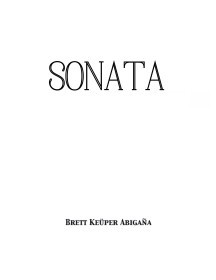

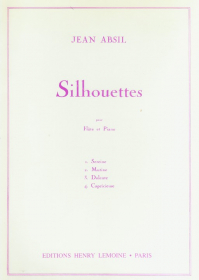

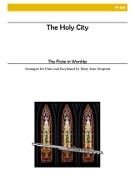

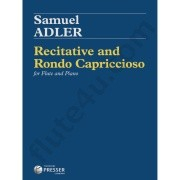


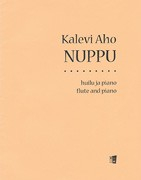
![Alain, J :: Trois Mouvements [Three Movements]](http://www.flute4u.com/var/images/product/262.280/D009790046203749.jpg)

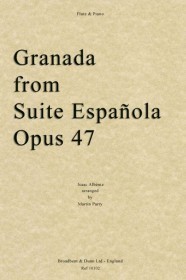

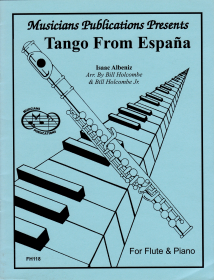




![Bach, JS :: Flotensonaten II [Flute Sonatas II]](skins/Multistore/customer/images/no_image.png)
![Bon, A :: Sei Sonate da Camera [Six Sonatas da Camera] Op. 1 - Volume 2](http://www.flute4u.com/var/images/product/262.280/P/D009790500129707.jpg)
![Bonis, M :: Sonate [Sonata]](http://www.flute4u.com/var/images/product/262.280/700000000KS98001.jpg)
![Bach, JS :: Vier Sonaten [Four Sonatas]](http://www.flute4u.com/var/images/product/262.280/P/D009790006447992_d.jpg)
![Amirov, F :: Sechs Stucke [Six Pieces]](http://www.flute4u.com/var/images/product/262.280/P/D009790003068596.jpg)
![Bach, WF :: Zwei Sonaten in e-Moll und F-Dur [Two Sonatas in e minor and F Major] BR-WFB 17 und 18](http://www.flute4u.com/var/images/product/262.280/P/D009790007089160.jpg)
![Bach, JS :: Sonate C-Dur | Sonate Es-Dur | Sonate g-Moll [Sonata in C major | Sonata in E-flat major | Sonata in G minor]](http://www.flute4u.com/var/images/product/262.280/P/D009790006507047_d.jpg)

![Bach, JS :: Flotensonaten I BWV 1030-1032 [Flute Sonatas I BWV 1030-1032]](http://www.flute4u.com/var/images/product/262.280/D009790014105440.jpg)
![Bach, CPE :: Hamburger Sonate G-Dur [Hamburger Sonata in G Major]](http://www.flute4u.com/var/images/product/262.280/P/D009790001093194_d.jpg)